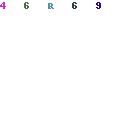Physics professors test their newly developed method to combat Hepatitis C virus, through wider international collaboration
Physics professors Edward Ackad and Mohammad Yousef collaborated with scientists from Egypt and Pakistan to validate their newly developed methodology, which aims to predict strains of Hepatitis C virus that are drug resistant. Their research was published in PLOS ONE.
An extension of their previous publication that compared American and Egyptian Hepatitis C strains, this time, they incorporated the Pakistani version of the virus as well and according to Yousef, the results were astonishing.
“The results were very good,” Yousef said. “It proved that our predictive method is very robust and solid.”
Their method, according to Yousef, can predict the behavior of a key enzyme from the Hepatitis C Virus that can cause drug resistivity.
According to Yousef, the publication in PLOS (Public Library of Science) ONE, a peer-reviewed scientific journal, has attracted a lot of attention as it has been downloaded nearly 1,000 times since Aug. 2014.
Yousef added that he expects more international partners to join the endeavor to develop and augment the new methodology.
As the project involved physics, biology and computation, two SIUE students in the Undergraduate Research and Creative Activities (URCA) program were trained to assist the professors in their research.
Senior biology major Mitchell Kramer served as the first author, or main contributor in writing and editing the article for roughly a year. He worked closely with Yousef.
According to Kramer, the research opportunity delved into treating diseases which was relevant to his intended field of study: medicine. He added that he gained a lot of experience going through resources, researching, analyzing the data and writing a paper with people from around the world.
“It was a big deal and I spent a lot of time on it,” Kramer said.
According to Yousef, he enjoyed working with and mentoring Kramer.
“He’s a very talented, hardworking student,” Yousef said. “I encourage students who work with me to meet my high expectations of research.”
Engineering major Daniel Halleran worked with Ackad and helped him with the computations in the project.
According to Ackad, he enjoyed Halleran’s enthusiasm and new ideas on the project which involved a multi-disciplinary approach.
“I think it will continue to spur interest on a very difficult problem,” Ackad said.
Ackad said the collaborative research is a significant achievement in a relatively new field: predicting Hepatitis C behavior using computations.
“I feel great,” Yousef said. “I’m very proud of what we have accomplished so far. We’re attacking a very important problem that has worldwide health impacts, and at the same time, both undergraduate and graduate students are getting valuable training in a fore-front research, within an international setting.”
Their article is titled, ‘Comparative Molecular Dynamics Simulation of Hepatitis C Virus NS3/4A Protease (Genotypes 1b, 3a and 4b) Predicts Conformational Instability of the Catalytic Triad in Drug Resistant Strains.’
Filed Under: Physics













